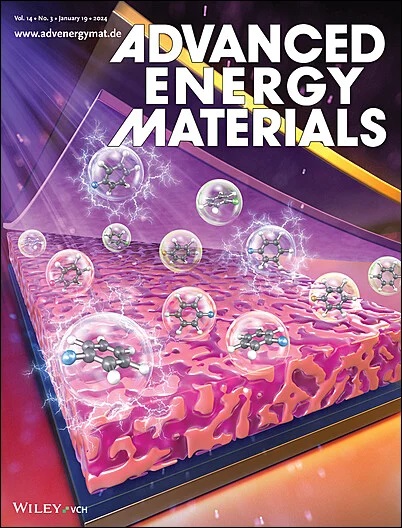In Situ Aminolysis of Fluoroethylene Carbonate Induced Low-Resistance Interphase Facilitating Extreme Fast Charging of Graphite Anodes
IF 24.4
1区 材料科学
Q1 CHEMISTRY, PHYSICAL
引用次数: 0
Abstract
Achieving extreme fast charging (XFC) lithium-ion batteries (LIBs) is essential for future battery applications, yet challenges remain in facilitating interfacial lithium-ion transportation across solid electrolyte interphase (SEI). While traditional SEI design prioritizes chemical composition, this study constructs an “ion-seepage” SEI framework accentuating the spatial distribution and arrangements of inorganic components via in-situ aminolysis reaction between fluoroethylene carbonate (FEC) and protic amines. This SEI architecture with tailored organic and nanoscale inorganic component distributions boosts interfacial Li+ transfer kinetics, ultimately enabling XFC and stable low-temperature cycling. Practical validation at the pouch-cell level exhibits excellent high-rate (up to 10C) performance, highlighting the great potential of protic amines in commercial extreme fast-charging LIBs. Moreover, this strategy exhibits considerable versatility, across various protic amines, electrolyte systems, and anode materials, providing a universal approach for developing XFC batteries and valuable insights for SEI design.

氟碳酸乙烯诱导低电阻界面相的原位氨解促进石墨阳极的极快充电
实现锂离子电池(LIB)的极速充电(XFC)对未来的电池应用至关重要,但在促进锂离子跨固体电解质相间层(SEI)的界面传输方面仍存在挑战。传统的 SEI 设计优先考虑化学成分,而本研究通过碳酸氟乙酯(FEC)和原生胺之间的原位氨解反应,构建了一种 "离子渗流 "SEI 框架,强调无机成分的空间分布和排列。这种 SEI 结构具有量身定制的有机和纳米级无机成分分布,可提高界面 Li+ 转移动力学,最终实现 XFC 和稳定的低温循环。在袋式电池水平上的实际验证显示了卓越的高速率(高达 10C)性能,突出了原生胺在商用极限快速充电 LIB 中的巨大潜力。此外,这种策略在各种原胺、电解质系统和阳极材料中都表现出相当大的通用性,为开发 XFC 电池提供了一种通用方法,并为 SEI 设计提供了宝贵的见解。
本文章由计算机程序翻译,如有差异,请以英文原文为准。
求助全文
约1分钟内获得全文
求助全文
来源期刊

Advanced Energy Materials
CHEMISTRY, PHYSICAL-ENERGY & FUELS
CiteScore
41.90
自引率
4.00%
发文量
889
审稿时长
1.4 months
期刊介绍:
Established in 2011, Advanced Energy Materials is an international, interdisciplinary, English-language journal that focuses on materials used in energy harvesting, conversion, and storage. It is regarded as a top-quality journal alongside Advanced Materials, Advanced Functional Materials, and Small.
With a 2022 Impact Factor of 27.8, Advanced Energy Materials is considered a prime source for the best energy-related research. The journal covers a wide range of topics in energy-related research, including organic and inorganic photovoltaics, batteries and supercapacitors, fuel cells, hydrogen generation and storage, thermoelectrics, water splitting and photocatalysis, solar fuels and thermosolar power, magnetocalorics, and piezoelectronics.
The readership of Advanced Energy Materials includes materials scientists, chemists, physicists, and engineers in both academia and industry. The journal is indexed in various databases and collections, such as Advanced Technologies & Aerospace Database, FIZ Karlsruhe, INSPEC (IET), Science Citation Index Expanded, Technology Collection, and Web of Science, among others.
 求助内容:
求助内容: 应助结果提醒方式:
应助结果提醒方式:


